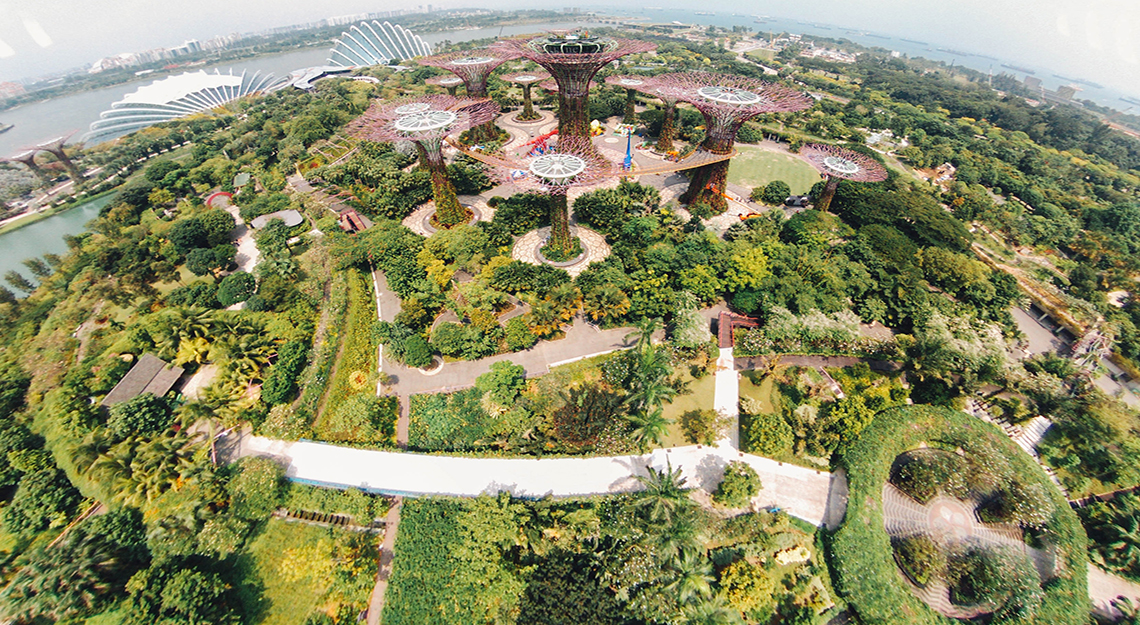If you’re the type of person who scoffs at the notion of going to a shopping mall because you find it an egregious waste of resources and a symptom of the blight of industrial capitalism, you might find yourself reconsidering after hearing about 313@somerset in Singapore.
The eight-story mall in Singapore’s downtown Newton neighbourhood boasts solar panels, skylights, thermally insulated doors, rainwater collection columns for irrigation, highly efficient elevators and escalators, energy-saving air-conditioning units, and software that monitors the structure’s carbon dioxide emissions.
How’s that for a modern mall?
In fact, Singapore consistently ranks as one of the world’s most sustainable cities, alongside Zurich, Vienna, and Seoul. But if the complexities of advocating for green building and sustainable city development seem daunting here at home in Toronto, we might start by asking two questions:
- What are these remarkable cities doing right in advancing sustainable building practices?
- What missteps have they encountered along the way—and could they save us the trouble?
1) What are these remarkable cities doing right in advancing sustainable building practices?

It’s difficult to create change by simply appealing to sheer good will—that’s why Singapore has developed generous incentive schemes for green building, including extensive government funding and support. Such incentives include:
- Energy Market Authority, which promotes reliable and secure energy while also promoting competition and the economic health of the energy sector.
- SPRING Singapore, a Ministry of Trade accreditation agency that brings partners, financing, and technological innovation to the city within strict safety and quality standards.
Did you know that Singapore, which has a population of five million and is roughly half the size of New York City, is composed of more than one-fifth certified green buildings? Singapore is proof that sustainability can be part of an economic development strategy, and not just a pipe dream that’s the “right thing to do”.
What can we do locally in Toronto and across Ontario more broadly to mimic these efforts? Citizen engagement is a huge part of creating and influencing policies that will foster economic development hand-in-hand with sustainable building. Here are some ideas you might consider here at home:
- Attend public consultations and meetings held by groups like TransformTO, a collaborative project between the city and its citizens aimed at reducing greenhouse gas emissions.
- Write to your local politicians and demand that they participate in working groups like the Canada Green Building Council’s Municipal Leader’s Forum (MLF).
- Get to know the work of organizations like Open North, a purveyor of civic engagement training and tools. They can help you organize with your neighbours, friends, and communities to mount civic engagement campaigns to advocate for sustainable construction initiatives.
2) What missteps have sustainable cities encountered along the way—and could they save us the trouble?

Copenhagen has long been touted as a global icon of sustainable, thriving cities—and with good reason. The Danish capital has a lively cycling culture (and infrastructure to match), nurtures big plans to achieve carbon neutrality by 2025, and boasts what was once the largest offshore wind farm on earth.
But the cracks have begun to show: housing costs are skyrocketing, the downtown core is flooding with cars, and the population is growing at a rate that may not be adequately served by existing resources. What is Copenhagen doing to divert a head-on collision with these forces?
As this nextcity.org profile notes, “the answer arguably starts with government .” The Danish model of government—dominant across Scandinavia—heavily promotes compromise between political parties, never giving one party the singular authority to make sweeping changes. While we may not have a perfect model of compromise in Canada, we are at least lucky to have more than two dominant political parties, as is the case in the United States.
When political compromise is the name of the game, policies “can flounder if their arguments aren’t backed up by data.” Tools and technologies to evaluate massive quantities of data are becoming more sophisticated by the minute. Municipal policy-makers now have incredible opportunities to develop and employ big data practices in creating sustainable development.
But again, what can we as engaged citizens do?
When getting involved and active in your communities and municipal politics, try to advocate for an evidence-based culture of policy development. With the world’s information at everyone’s fingertips, we can all do the necessary research to influence our policymaker’s actions and initiatives.
As Copenhagen’s compromise-reliant, evidence-based approach has shown, being armed for growth and demand with the weapons of data, research, and evidence means we can not only develop a sustainable city here at home, but we can ensure its survival for generations to come.



